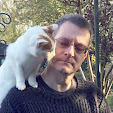That means whenever I return to 3D modelling I have to remember how to use Blender again. Typically Blender has progressed a version or two as it is very actively being developed. It always takes me a while to get back up to speed.
I hunted round for quick start guides and keyboard shortcuts but none quite had what I needed.
What I wanted was the common features used to make most models to get me up to speed as quickly as possible. I don't need every feature because I can look up the rarely used ones as needed. Therefore, in my usual way, I have created a desktop quick reference guide that has the features I need to remember each time.
Downloads
I've made a couple of versions available for download:
PDF to print or view
Source PowerPoint to edit to make your own changes
3D Printing
If you are interested in 3D printing see my other blog.
==
Last Updated - 3 March 2016
Cross post on my other blog














